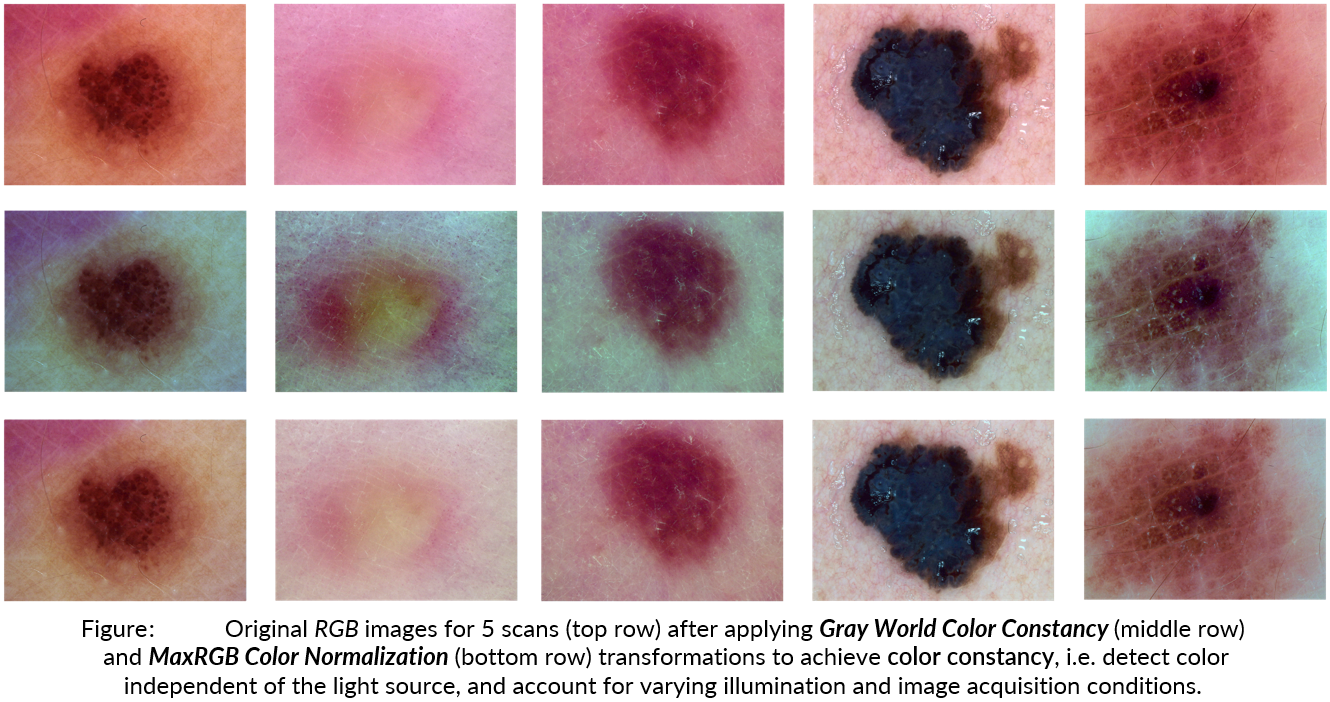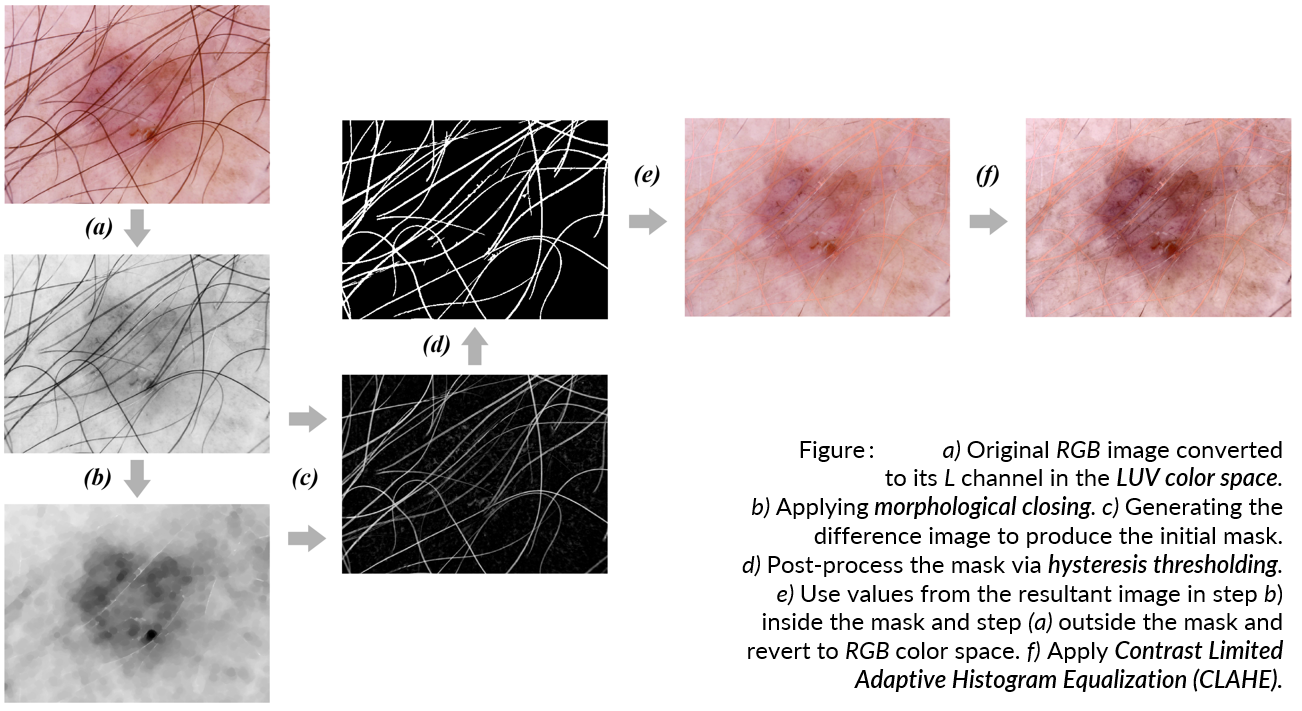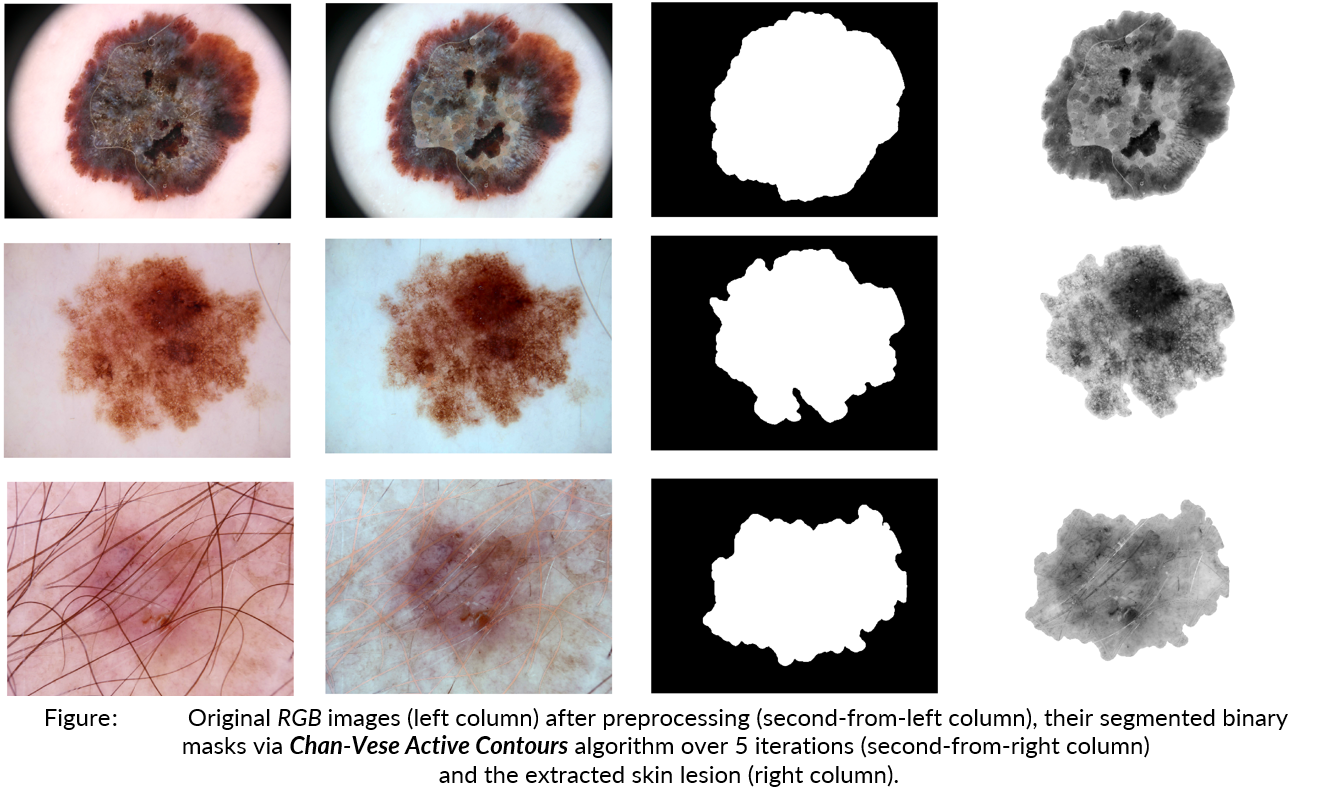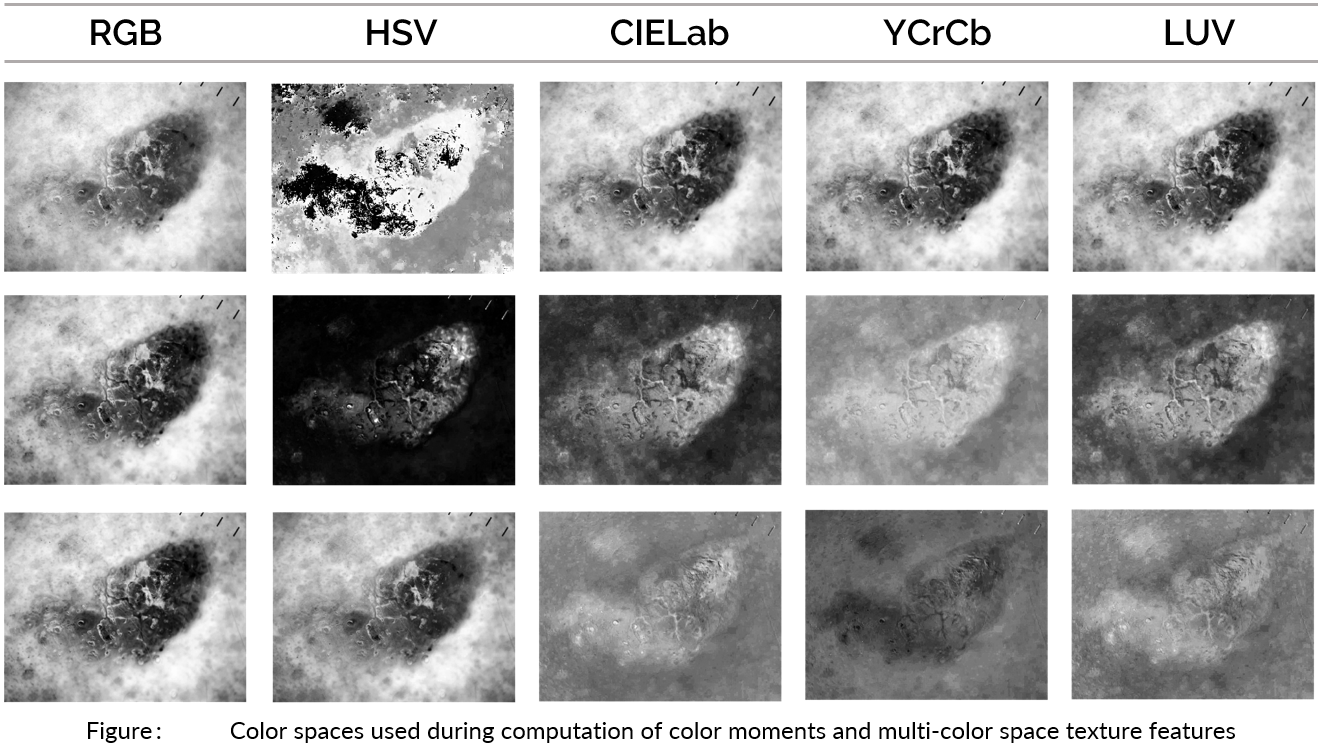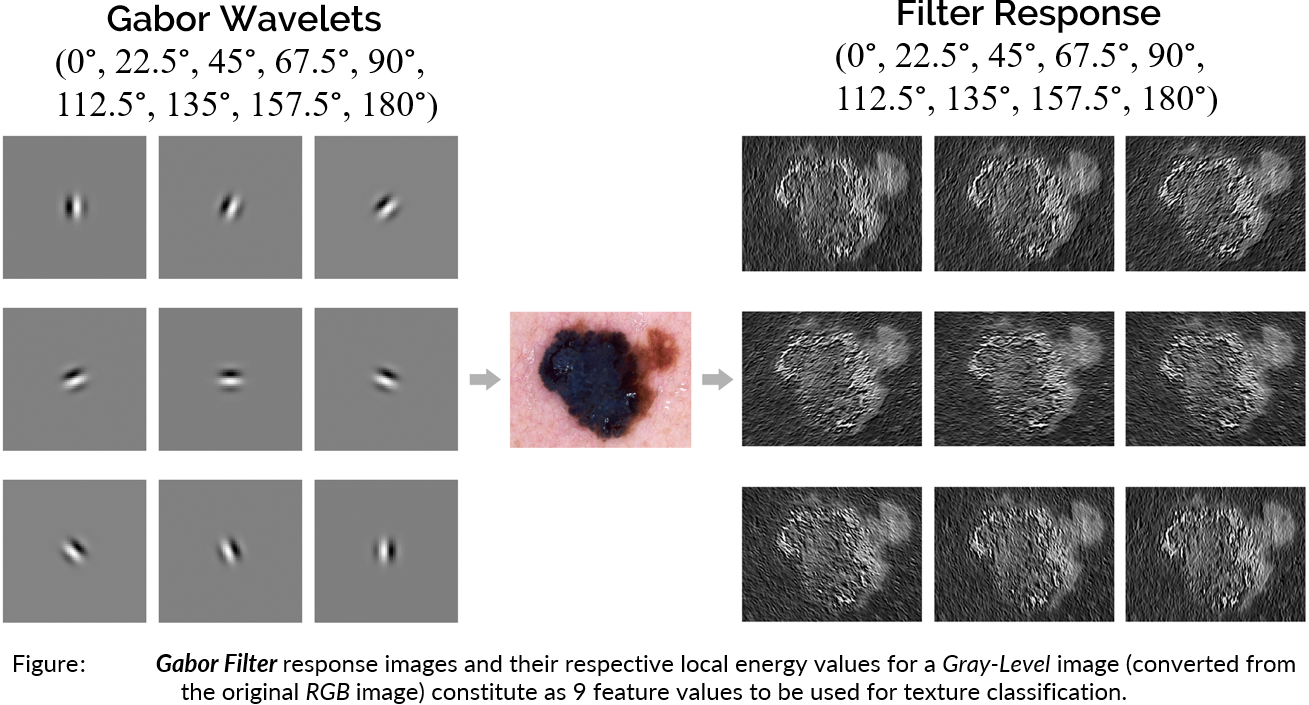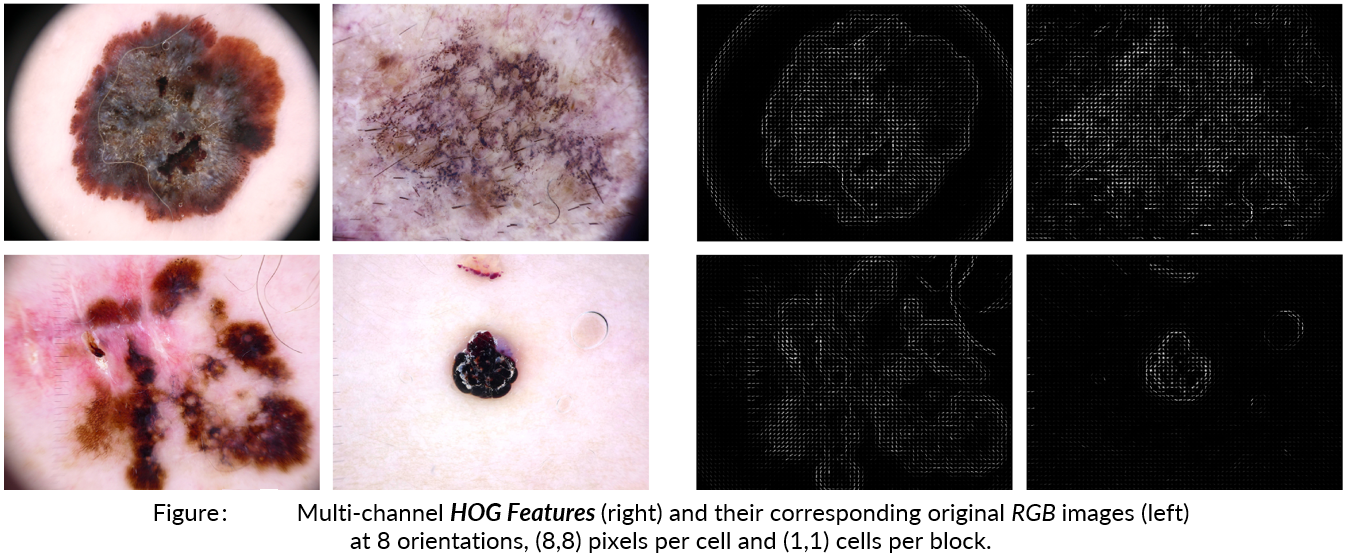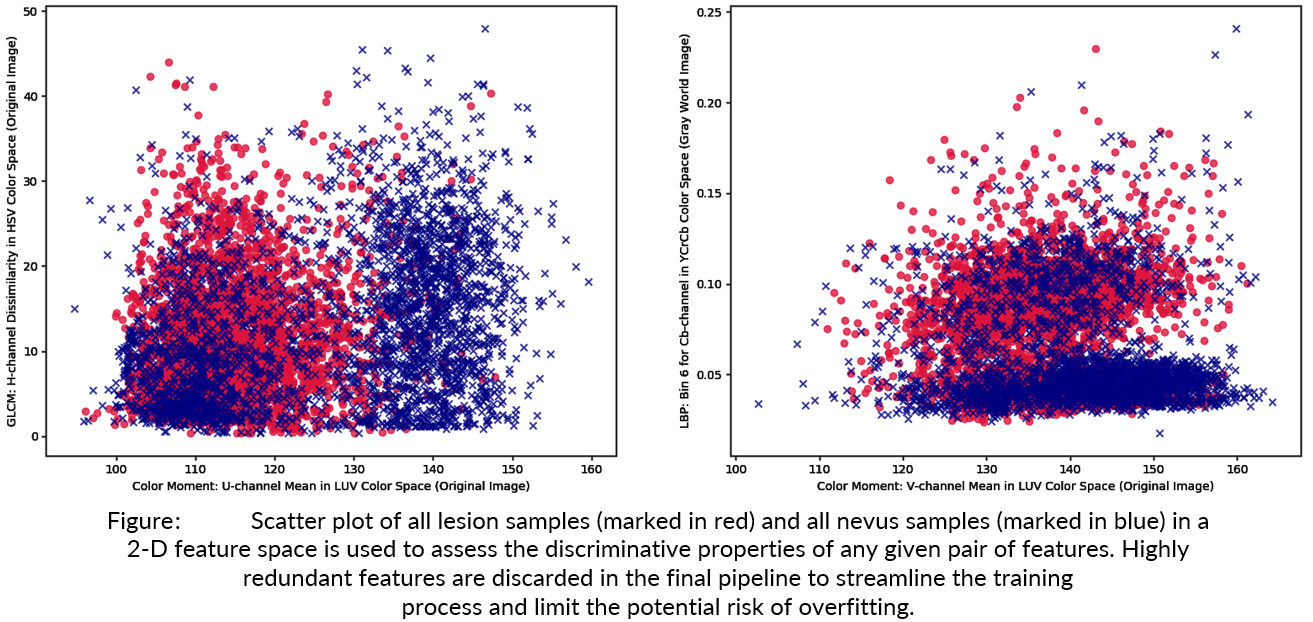Color/Texture Features with Support Vector Machine and Random Forest for Disease Classification of Skin Lesions
Problem Statement: Fully supervised binary classification of skin lesions from dermatoscopic images.
Note: The following approach won 1st place in the 2019 Computer-Aided Diagnosis: Machine Learning in Dermascopy Challenge at Universitat de Girona scoring 88.1% accuracy (kappa: 0.732) at test-time, during the 2018-20 Joint Master of Science in Medical Imaging and Applications (MaIA) program.
Acknowledgments: Mina Sami for the Python implementation of Shades of Gray Color Constancy.
Data: Class A: Nevus; Class B: Other (Melanoma, Dermatofibroma, Pigmented Bowen's, Basal Cell Carcinoma, Vascular, Pigmented Benign Keratoses) [4800/1200/1000 : Train/Val/Test Ratio]
Directories
● Data I/O Functions: scripts/dataio.py
● Preprocessing Functions: scripts/preprocess.py
● Unsupervised Segmentation Functions: scripts/segment.py
● Feature Computation Functions: scripts/colorfeatures.py
● Final Feature Extraction Function: scripts/feature_extraction.py
● Classifier Support Functions: scripts/classify.py
● Inference Pipeline Notebook: scripts/predict.ipynb
● Training-Validation Pipeline Notebook: scripts/train-val.ipynb
